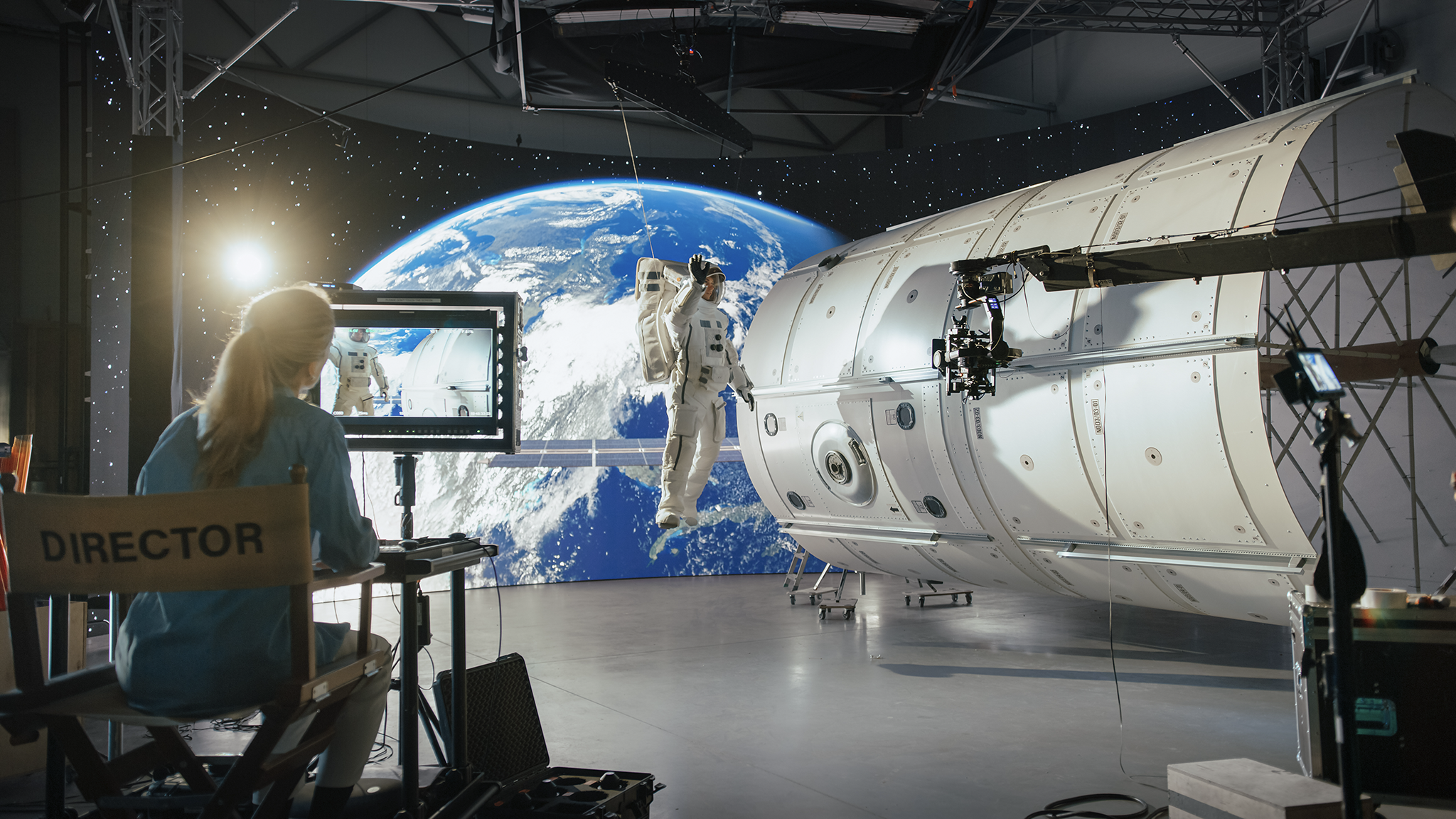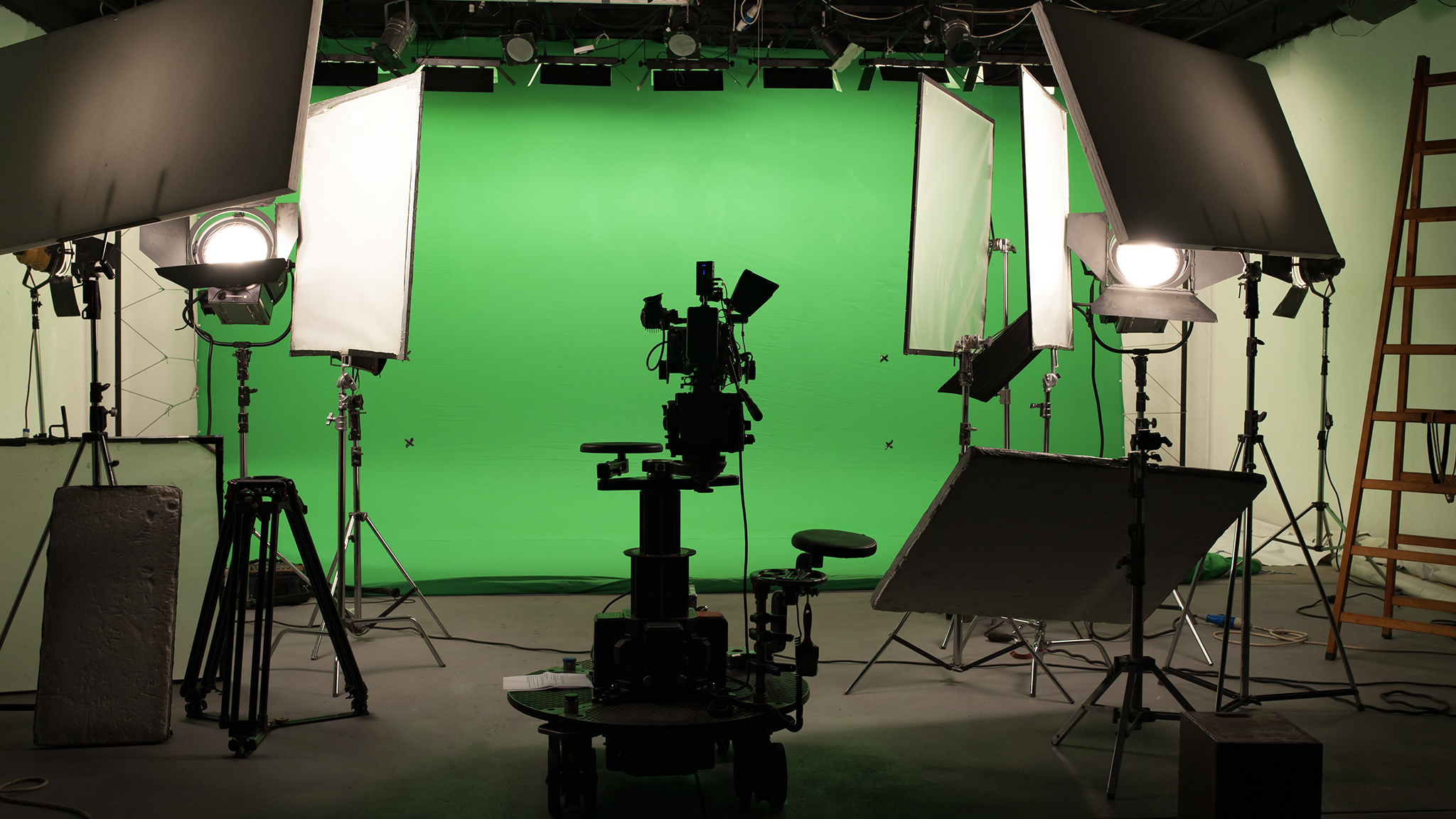
Virtual production is evolving into the industry standard for producing content at all budget levels and genres. A report in the Wall Street Journal estimates productions can save up to 40% of their budget using virtual production.There are initial costs and time associated with system set up, but once your virtual production workflow is established, opportunities to stretch your budget and shorten production times immediately become available.
The rapid development of technology is enabling smaller production studios to take advantage of the workflow for higher productivities and to create new value drivers.

Here are some key benefits of virtual production:
Let’s break down the advantages of both LED stages and green screen stages:
Real-Time Visuals:
What It Is: LED stages use large screens to display digital backgrounds in real-time.
Why It Matters: You can see the final look of a scene while you’re filming it. This means you can make adjustments on the spot, saving time and ensuring everything looks perfect.
Immersive Experience:
What It Is: Actors perform in front of realistic digital environments displayed on LED screens.
Why It Matters: This helps actors feel more immersed in the scene, leading to better performances. It also means you don’t have to imagine the background; you can see it right there.
Natural Lighting:
What It Is: The LED screens emit light that matches the digital environment.
Why It Matters: This creates natural reflections and lighting on the actors and props, making the scene look more realistic without the need for extensive post-production work.
Flexibility:
What It Is: You can change the background, weather, and lighting with just a few clicks.
Why It Matters: This allows for quick changes and experimentation, giving you more creative control.
Cost-Effective:
What It Is: Green screens are large green backdrops that can be replaced with any digital background during post-production.
Why It Matters: Setting up a green screen is relatively inexpensive compared to building physical sets or using LED stages.
Versatility:
What It Is: You can film in front of a green screen and replace the background with any environment you want later.
Why It Matters: This gives you the flexibility to create any setting without needing to travel or build elaborate sets.
Established Workflow:
What It Is: Green screen technology has been used for a long time and is well-understood by filmmakers.
Why It Matters: Many production teams are already familiar with the process, making it easier to integrate into existing workflows.
Post-Production Control:
What It Is: You can fine-tune the background and effects during post-production.
Why It Matters: This allows for precise control over the final look of the scene, especially useful for complex visual effects.
LED Stages: Great for real-time adjustments, natural lighting, and immersive experiences. Ideal if you want to see the final look while filming and make quick changes.
Green Screen Stages: Cost-effective and versatile, with a well-established workflow. Perfect if you’re looking for flexibility in post-production and have a tighter budget.


Here are some of the popular tracking options available:
A render engine is a software tool that takes 3D models and scenes and converts them into high-quality images or animations. It handles the complex calculations needed to simulate lighting, shadows, textures, and other visual effects to create realistic or stylized visuals.
Input Data: The render engine starts with various inputs, including:
3D Models: These are the objects and characters created by artists.
Textures: These are the surface details applied to the 3D models to give them color and detail.
Lighting Information: This includes the position, intensity, and color of light sources in the scene.
Camera Settings: This defines the perspective from which the scene is viewed.
Real-Time Rendering: The render engine processes all this data in real-time to generate the final images. It calculates how light interacts with surfaces, how shadows are cast, and how textures appear under different lighting conditions. This real-time capability is crucial for live-to-tape production, where the final visuals need to be ready immediately with minimal post-production.
Output: The result is a series of high-quality images or frames that can be used directly in the final production.
Setup: Large LED screens are set up around the stage to display digital backgrounds.
Real-Time Integration: The render engine generates the digital backgrounds in real-time, matching the camera’s movements and perspective.
Live Preview: As the actors perform, the director and crew can see the final combined shot (live-action footage with digital backgrounds) on monitors. This allows for immediate adjustments and ensures everything looks perfect without needing extensive post-production.
Setup: Actors perform in front of a green screen.
Real-Time Compositing: The render engine replaces the green background with the digital environment in real-time. This process is known as live compositing.
Live Preview: Similar to LED stages, the director and crew can see the final combined shot on monitors as it is being filmed. This allows for immediate adjustments and ensures the scene looks as intended without needing extensive post-production.
There are several areas to be considered:
Stage Compatibility: Depending on your stage setup, some software work better with a XR workflow and some software performs better with a green screen.
Output Quality: Each software has added features for scene integration such as shadow and reflections, as well as color tuning and artifact removal mechanisms.
Overall Cost: Most of these software uses a subscription based pricing model, and require specific hardware to perform properly. Some require leasing custom hardware directly from the providers. Most will require special video card with genlock and other necessary production functions.
Ease of Use: Some render engines have a steeper learning curve than others. Consider the time and resources required to train your team. A user-friendly interface can significantly improve productivity and reduce the time spent on routine tasks.
Versatility: Some of these software can handle all 3 major categories of virtual production: virtual set (VS), augmented graphics (AR), and extended LED wall (XR) productions. When selecting the software, you should consider both your current needs and future expansions.
Here are some of the popular tracking options available:
With the setup in place, it is time to put the system to work. To ensure successful productions, here are the key areas of focus:
Expertise in Real-Time Graphics: To leverage the limitless creative freedom of real-time virtual production, the content team needs to have an expert understanding of how real-time graphics can be utilized by the render engine. FPS (Frames Per Second) is crucial. If the render cannot run smoothly at the targeted FPS, it will instantly be a show killer.
Interactive Events: To utilize the advantages of using a real-time game engine such as Unreal Engine, an experienced technical artist can set up various interactive events that can transform your linear programming into something more immersive and interactive.
Live Data Connections: Knowledge of creating live data connections and building user-friendly control interfaces for operators is also required.
System Maintenance and Operation: It is essential to have knowledgeable staff who can maintain, QC (Quality Control) the system, and operate it during on-air time or shoots.
Technical Understanding: The engineer should have a thorough understanding of tracking, signal, timecode, and other data transmission-related workflows to ensure the system works smoothly.
Operational Knowledge: The operator will need to have solid knowledge of the workflow and how to control the graphics, as well as any type of interactivities that need to be triggered during on-air time.
Do you need help or have questions about our software or services? Please send us your contact information, and we will get back to you shortly.